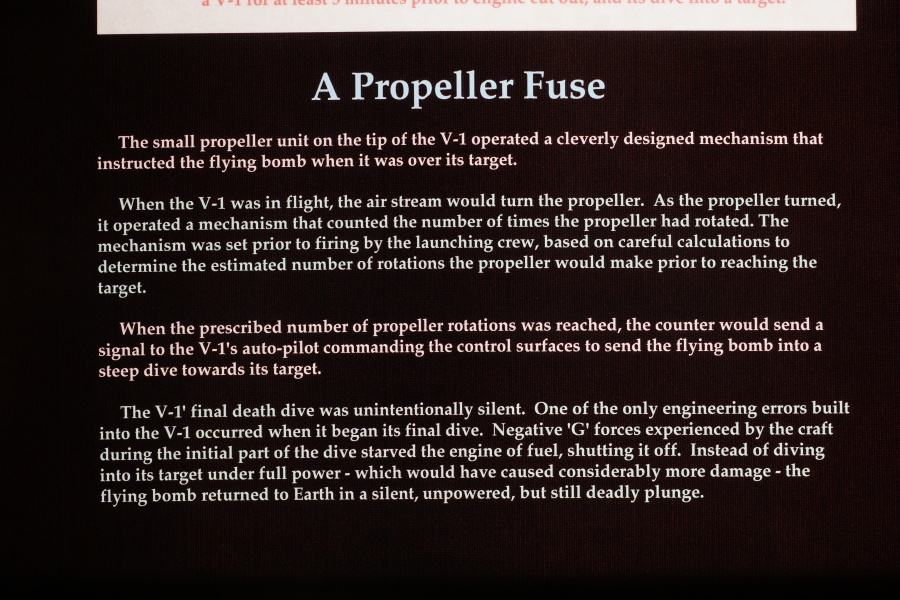| Prev |
heroicrelics.org Kansas Cosmosphere Site Index V-1 Gallery |
Next |
dscc5364.jpg
One of the signs accompanying the buzz bomb. It reads
A Propeller Fuse
The small propeller unit on the tip of the V-1 operated a cleverly designed mechanism that instructed the flying bomb when it was over its target.
When the V-1 was in flight, the air stream would turn the propeller. As the propeller turned, it operated a mechanism that counted the number of times the propeller had rotated. The mechanism was set prior to firing by the launching crew, based on careful calculations to determine the estimated number of rotations the propeller would make prior to reaching the target.
When the prescribed number of propeller rotations was reached, the counter would send a signal to the V-1's auto-pilot commanding the control surfaces to send the flying bomb into a steep dive towards it target.
The V-1's final death dive was unintentionally silent. One of the only engineering errors built into the V-1 occurred when it began its final dive. Negative 'G' forces experienced by the craft during the initial part of the dive starved the engine of fuel, shutting it off. Instead of diving into its target under full power - which would have caused considerably more damage - the flying bomb returned to Earth in a silent, unpowered, but still deadly plunge.

| Time picture taken | Thu Apr 14 11:15:02 2016 |
| Location picture taken |
German Gallery Space Hall Kansas Cosmosphere Hutchinson, KS |
| Prev |
heroicrelics.org Kansas Cosmosphere Site Index V-1 Gallery |
Next |